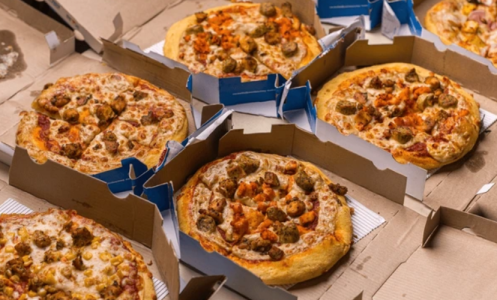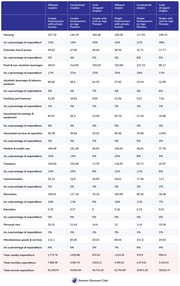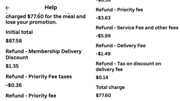Domino’s scraps discount deals—what the new pricing changes mean for you
By
Gian T
- Replies 1
If you’re the type to jump on a two-for-one pizza deal or scour the internet for Domino’s discount vouchers, you might want to brace yourself.
The pizza chain that’s been a staple of Friday nights and family gatherings for decades is making a major change to its business model—and it could spell the end of those pizza bargains.
Jack Cowin, Domino’s 83-year-old executive chair (and the man behind Hungry Jack’s, no less), has announced that the company will be ditching its heavy discounting and voucher system in favour of a new 'everyday low price' model.
If you’re thinking this sounds a bit like Bunnings’ famous 'lowest prices are just the beginning' approach, you’re spot on.
The idea is to offer consistent, competitive pricing all year round, rather than relying on flashy promotions and limited-time offers.
Why the big change? Well, Domino’s has had a rough year. After delivering a whopping $96 million profit in 2024, the company swung to a $3.7 million loss in the 2025 financial year—their first loss since they listed on the Australian Securities Exchange over 20 years ago.
Ouch! The company’s share price has also taken a tumble, dropping from a high of over $160 during the COVID-19 pizza boom to just $15.10 recently, following a disappointing revenue report and a 22 per cent share price drop in a single day.
So, what’s behind the pizza pain? According to Mr Cowin, Domino’s customers have been 'trained' to only buy pizza when there’s a discount voucher involved.
While this has been great for bargain hunters, it’s made things complicated for the business and tough on franchisees’ profits.
'Giving away money like that also impacts franchisee profitability,' Cowin explained.
The constant cycle of discounts and promotions has made the ordering process more confusing and, ultimately, less sustainable for the company.
Instead, Domino’s is taking a leaf out of Bunnings’ book and moving to a model where you always know what you’ll pay—no more waiting for the next big sale or hunting for a code online.
The hope is that this will simplify things for customers and franchisees alike and help the company get back on track.
But will it work? The 'everyday low price' model has certainly been a winner for Bunnings, but pizza is a different beast.
Aussies love a deal, and there’s a certain thrill in nabbing a pizza for half price or less.
Only time will tell if customers will embrace the new approach or if they’ll start looking elsewhere for their pizza fix.
It’s not just the pricing model that’s changing, either. Domino’s has been forced to close 312 underperforming stores (mostly in Japan), and the company is still searching for a permanent CEO after the sudden resignation of Mark van Dyck.
Sales for the first seven weeks of the new financial year have also been disappointing, falling 0.9 per cent when a 3.1 per cent rise was expected. Even the final dividend has been slashed from 50.4¢ last year to just 21.5¢.
Despite all this, Cowin remains optimistic. He points out that Domino’s has managed to hold its ground in Australia and New Zealand, even as food delivery giants like UberEats and DoorDash have made the market more competitive than ever.
'I’m not upset that with the advent of all that competition that’s come into this delivery space, that we’ve maintained the business,' he said.
He believes that Domino's can turn things around by cutting costs, improving advertising, and offering better value through everyday low prices.
What does this mean for you, our loyal Seniors Discount Club members? If you’re used to waiting for a deal before ordering your favourite pizza, you might need to adjust your strategy.
The days of stacking vouchers and hunting for secret codes could be coming to an end. On the bright side, you’ll always know what you’re paying, and you won’t have to worry about missing out on a better deal next week.
 Have you noticed changes in your local store or in the quality of your orders? Share your thoughts and experiences in the comments below.
Have you noticed changes in your local store or in the quality of your orders? Share your thoughts and experiences in the comments below.
Read more: Woman fights for her rights after 'elaborate scam' pushed her to debt: 'What's going on here?'
The pizza chain that’s been a staple of Friday nights and family gatherings for decades is making a major change to its business model—and it could spell the end of those pizza bargains.
Jack Cowin, Domino’s 83-year-old executive chair (and the man behind Hungry Jack’s, no less), has announced that the company will be ditching its heavy discounting and voucher system in favour of a new 'everyday low price' model.
If you’re thinking this sounds a bit like Bunnings’ famous 'lowest prices are just the beginning' approach, you’re spot on.
The idea is to offer consistent, competitive pricing all year round, rather than relying on flashy promotions and limited-time offers.
Why the big change? Well, Domino’s has had a rough year. After delivering a whopping $96 million profit in 2024, the company swung to a $3.7 million loss in the 2025 financial year—their first loss since they listed on the Australian Securities Exchange over 20 years ago.
Ouch! The company’s share price has also taken a tumble, dropping from a high of over $160 during the COVID-19 pizza boom to just $15.10 recently, following a disappointing revenue report and a 22 per cent share price drop in a single day.
So, what’s behind the pizza pain? According to Mr Cowin, Domino’s customers have been 'trained' to only buy pizza when there’s a discount voucher involved.
While this has been great for bargain hunters, it’s made things complicated for the business and tough on franchisees’ profits.
'Giving away money like that also impacts franchisee profitability,' Cowin explained.
The constant cycle of discounts and promotions has made the ordering process more confusing and, ultimately, less sustainable for the company.
Instead, Domino’s is taking a leaf out of Bunnings’ book and moving to a model where you always know what you’ll pay—no more waiting for the next big sale or hunting for a code online.
But will it work? The 'everyday low price' model has certainly been a winner for Bunnings, but pizza is a different beast.
Aussies love a deal, and there’s a certain thrill in nabbing a pizza for half price or less.
Only time will tell if customers will embrace the new approach or if they’ll start looking elsewhere for their pizza fix.
It’s not just the pricing model that’s changing, either. Domino’s has been forced to close 312 underperforming stores (mostly in Japan), and the company is still searching for a permanent CEO after the sudden resignation of Mark van Dyck.
Sales for the first seven weeks of the new financial year have also been disappointing, falling 0.9 per cent when a 3.1 per cent rise was expected. Even the final dividend has been slashed from 50.4¢ last year to just 21.5¢.
'I’m not upset that with the advent of all that competition that’s come into this delivery space, that we’ve maintained the business,' he said.
He believes that Domino's can turn things around by cutting costs, improving advertising, and offering better value through everyday low prices.
What does this mean for you, our loyal Seniors Discount Club members? If you’re used to waiting for a deal before ordering your favourite pizza, you might need to adjust your strategy.
The days of stacking vouchers and hunting for secret codes could be coming to an end. On the bright side, you’ll always know what you’re paying, and you won’t have to worry about missing out on a better deal next week.
Key Takeaways
- Domino’s will scrap its longstanding discount vouchers and move to an 'everyday low price' strategy, similar to Bunnings, aiming for consistent and competitive pricing instead of regular promotions.
- The pizza chain suffered its first loss since listing over 20 years ago, posting a $3.7 million loss for the 2025 financial year after closing hundreds of underperforming stores, particularly in Japan.
- Executive chair Jack Cowin acknowledged the reliance on discounts had complicated the business and impacted franchisee profitability, prompting a broader cost-cutting and advertising overhaul.
- Domino’s shares plunged 22 per cent following the results, with sales disappointing in early 2026 and challenges remaining in markets like France and Japan, while Australia and New Zealand performed more strongly.
Read more: Woman fights for her rights after 'elaborate scam' pushed her to debt: 'What's going on here?'








